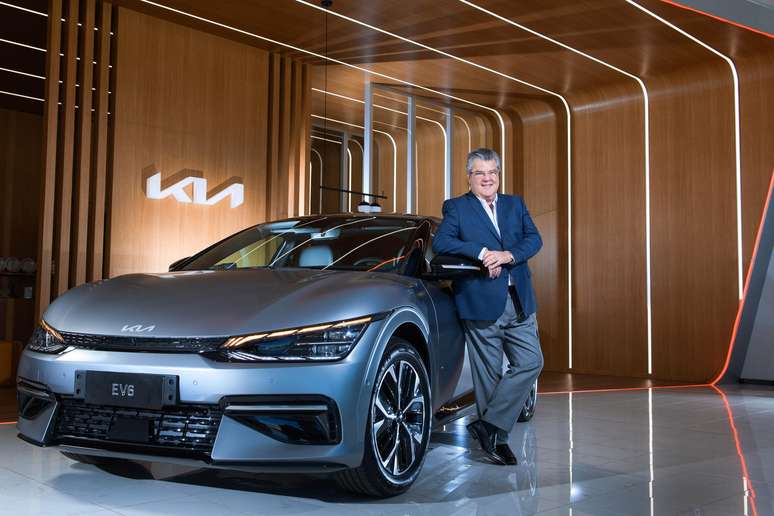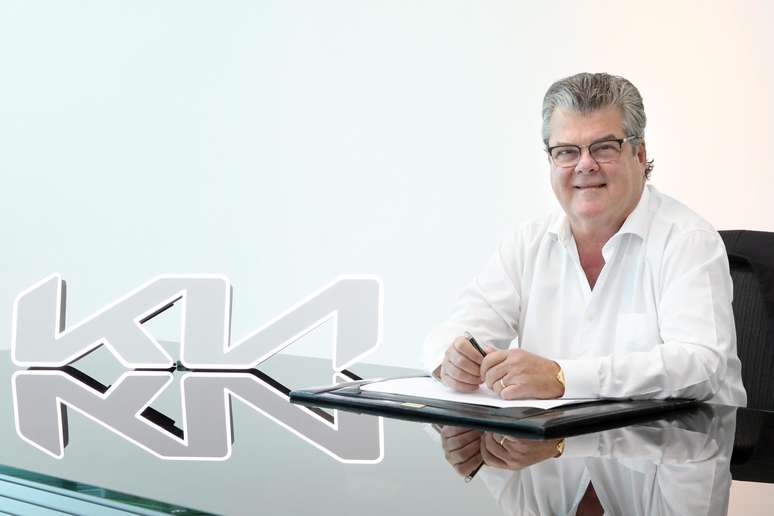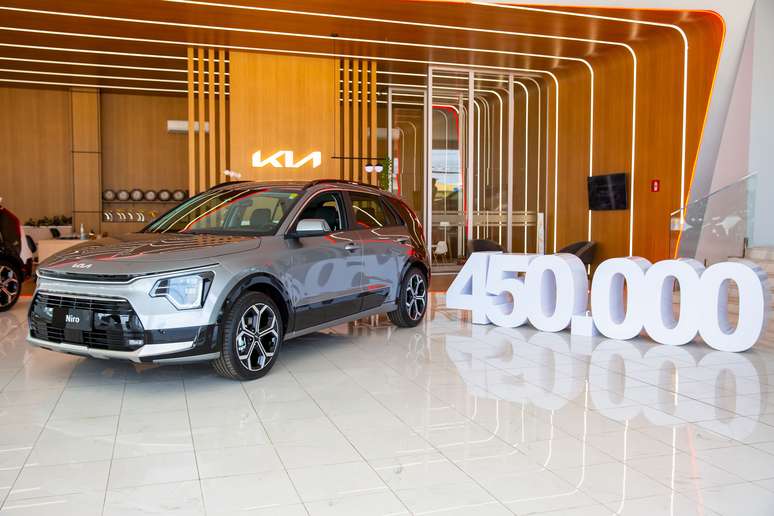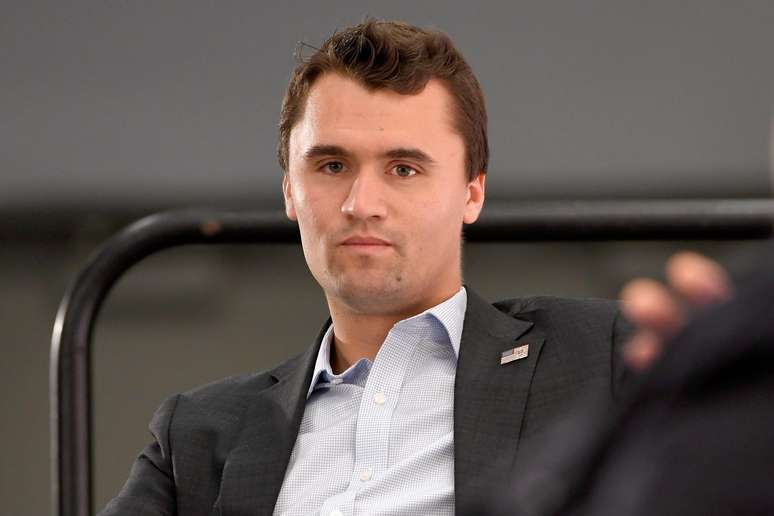Kia Brasil Innovates by Adding Up to 160,000km Carbon Offset Credits to New Niro Model Buyers
Kia Brasil completed 30 years of uninterrupted motor vehicle import business from South Korean automaker Kia Corp., whose appointment occurred on June 30, 1992, shortly after the opening of the Brazilian auto market to international trade.
This date also marks the delivery of the 450,000th unit, with the sale of the full hybrid SUV Niro, by the dealer Stern, of São Paulo, to the customer Lina Monetta Silva, who received – last August 23 – an emissions compensation certificate carbon up to 160,000 km traveled and free periodic coupons package.
To celebrate, Kia Brasil is extending its carbon offset up to 160,000km to all new Niro HEV buyers, starting with this commemorative unit through the end of this year.
Gandini father and son Gandini made history
“In summary, the thirty-year journey of Kia Brasil can be translated with the definition of the word resilience”, underlines José Luiz Gandini, president of the company, for whom “from the moment of the start of operations, up to today, passing through of ups and downs in the import sector, sometimes with government measures to protect the national industry, sometimes with exchange rate instability”.

In early 1992, two years after the opening of the market, José Carlos Gandini – father of the current president of the import company, José Luiz – was approached by a South Korean national, residing in Brazil, who at the time was looking for Brazilian entrepreneurs for representative officer of Kia Corp.
Also in the first half of that year, José Carlos Gandini traveled to South Korea to get to know Kia. Subsequently, a delegation of executives from the automaker traveled to Brazil to get to know the Gandini Group. In May of the same year, on a Friday, José Carlos received the news that the group had been appointed official Kia importer, with the caveat that “the first order must be for at least 1,000 vehicles”, even before the structuring of the company and the naming of the dealer network in the country.
José Carlos Gandini has confirmed the order for 1,000 units, a mix of the Besta, Besta Furgão, Ceres pick-up and K3500 light truck models. The effrontery of the president of the Gandini Group frightened all the members of the board. The next day, a Saturday, his son, José Luiz Gandini, went to Paraguay to see the Kias, because he only knew them through folders written entirely in Korean.
Thus, on June 30, 1992, Kia Motors do Brasil was founded. From August to December of the same year, Kia Brasil begins to structure its dealer network with six full service points, a feature of the company since its inception. offer the Brazilian market vehicles considered for work, which require a timely after-sales service. That year, Kia presented its product line to the public for the first time at the Auto Show.
The highlights of 30 years of Kia Brasil
In these thirty years, although the path of Kia Brasil has been marked by resilience, it has at the same time demonstrated to be innovative and to make history in the Brazilian market, starting with the audacity to adopt the corruption of Best A (original name of the utilitarian) for Besta, which has become synonymous with van in Brazil, introducing the Sportage 4×4 Diesel SUV, creating merchandising in soap operas, launching a 3-cylinder engine, up to the current electrified models Niro, Sportage and Stonic.
In terms of volume, out of a total of 450,000 licensed units over a three-decade period, the top five best-selling models are Sportage (106,000), Cerato (71,000), Bongo K2500 truck (62,000), Besta (58,000) and Picanto (42 thousand).
Having had a strong link with commercial vehicles, at the beginning of its activities, Kia Brasil has always favored its own spare parts and components distribution center. “We have always taken care of commercial vehicle customers, because the self-employed and fleet operators could not – and cannot – keep their SUVs idle due to lack of parts and components. This corporate culture was maintained even as Kia started selling more passenger cars,” Gandini points out.
In 2009, another milestone in the history of the Gandini Group, official representative of Kia Corp. in Brazil. In addition to importing South Korean vehicles to the Brazilian market, the group was appointed by Kia Corp. as distributor in neighboring Uruguay and received a manufacturing license for the Bongo K2500 light truck, in Montevideo, which would begin operations the following year. Of the total 62,000 Bongos, 37,000 units were produced in Uruguay.

In 2016, the Gandini Group started the construction of an automotive technology center in the municipality of Salto, in the hinterland of São Paulo. With a total investment of approximately BRL 55 million, the Gandini Centro Tecnológico started operations in September 2019. Recognized by Cetesb (Environmental Society of the State of São Paulo), the laboratory carries out tests on exhaust gas emissions (NBR 6601) , Fuel Consumption (NBR 7024), Evaporative Emissions (NBR 11481), Aldehyde Analysis (NBR 12026), Unburnt Alcohol Analysis (NBR 15598), Opacity Measurement (NBR 130370), and Light Hybrid Road Vehicles (NBR 16567 ), among others.
The Gandini Centro Tecnológico has an AVL system for analyzing Otto/Diesel emissions, including particle counting. The equipment list also includes two modern SHED VT chambers with variable volume, for measuring the evaporative emissions of light vehicles, which allow for homologation tests to be carried out for both Brazil and Mercosur. It is the only independent laboratory in Brazil equipped with a 4X4 dynamometer, combined with technology to test hybrid and electric vehicles.
Next steps for Kia Brasil
Just over two years ago, in the first week of 2021, Kia Corp. unveiled the new corporate logo and global brand slogan – “Movement That Inspires” – which symbolize the automaker’s bold transformation and all-new purpose of the brand name.
The introduction of the new logo represents Kia’s ambition to establish a leadership position in the future mobility sector by revamping almost every aspect of its business.
The launch of the new logo follows the announcement of Kia’s long-term corporate strategy “Plan S” in 2020, under which the brand has, among other goals, the ambition to take a leading position in the global automotive market . The focus is on the popularization of electric vehicles and the introduction of a wide range of mobility services, adapted to meet the needs and tastes of individuals and local markets.
As part of this new work philosophy, Kia Brasil received the EV6, a 100% demo model, and began marketing the Stonic, MHEV – Mild Hybrid Electric Vehicle or light hybrid.
Last year, in the path towards effective electrification of motor vehicles, Kia Brasil launched – in July – its best-selling model, now also in MHEV version, the Sportage; and in October the Niro, SUV Full HEV.
For the beginning of 2024, Kia Brasil has foreseen in its portfolio the arrival of the first 100% electric models in the country, with the launch of the large SUV EV9 and the Niro EV, both already shipped for homologation in Brazil.
Source: Terra
Rose James is a Gossipify movie and series reviewer known for her in-depth analysis and unique perspective on the latest releases. With a background in film studies, she provides engaging and informative reviews, and keeps readers up to date with industry trends and emerging talents.






